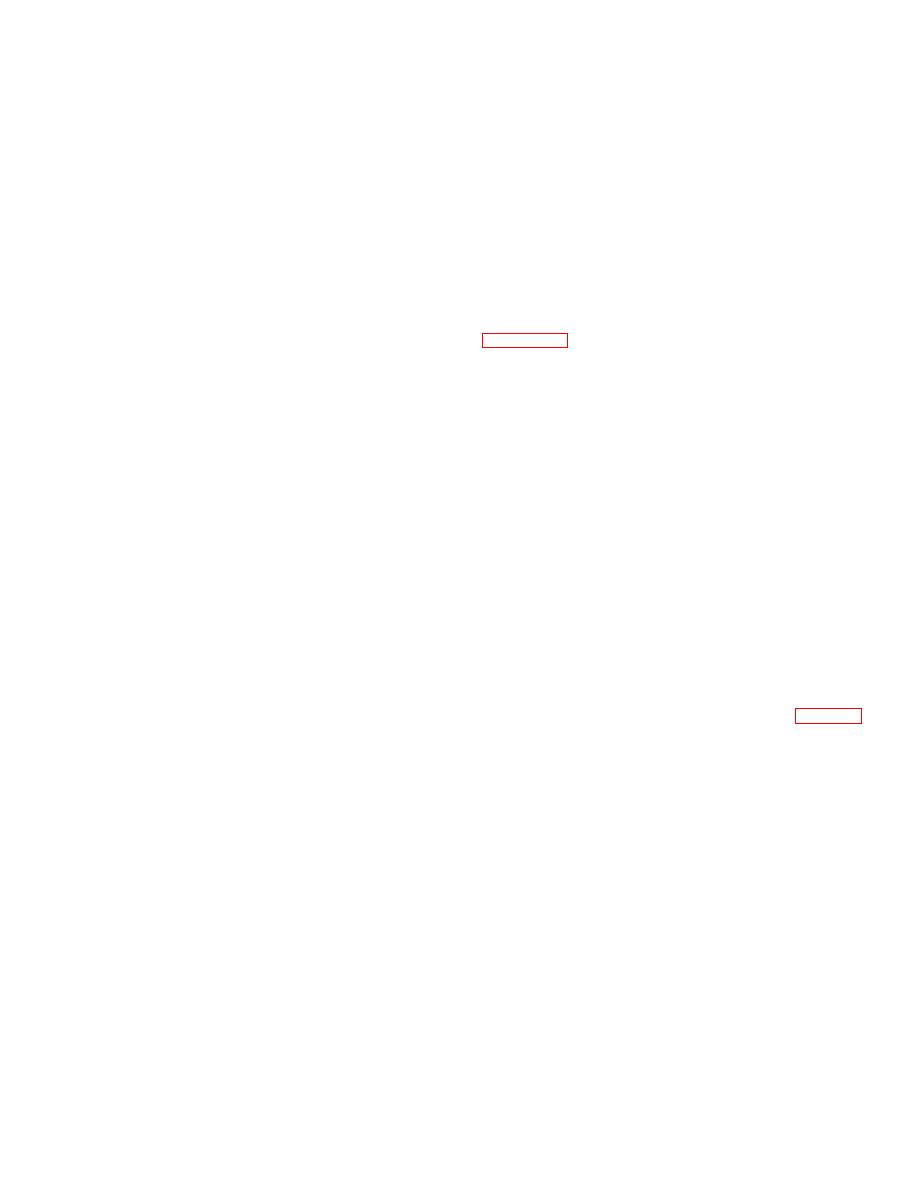 |
|||
|
|
|||
|
Page Title:
Section XIV. MAINTENANCE OF PUMP |
|
||
| ||||||||||
|
|
 b. Cleaning and Inspection.
movement, illegible dial faces, evidence of water entry,
and other damage. If possible, check the operation
WARNING
against master gages to ensure the accuracy of the
Clean all parts in a well-ventilated
indication. Replace damaged gages.
area. Avoid inhalation of solvent
(4) Inspect the lines for cuts, abrasions, leaks,
damaged threads, and other damage. Blow through
fumes and prolonged exposure of
lines with compressed air to ensure that they are open.
skin to cleaning solvent.
Wash
Replace damaged lines.
exposed skin thoroughly.
Dry
(5) Inspect the valves for cracks, damaged
cleaning solvent (fed. spec. P-D-680)
threads, and for catching or binding of the valve stem.
used to clean parts is potentially
Replace damaged valves.
dangerous
to
personnel
and
(6) Inspect all other parts for cracks, distortion,
property. Do not use near open
damaged threads, and other damage; replace damaged
flame or excessive heat. Flash point
parts.
of solvent is 100 to 138F (38 to
c. Reassembly and Installation. Install the suction
59C).
and discharge gages, lines, and fittings as shown in
(1) Clean the suction and discharge gages with
a cloth dampened with dry cleaning solvent (fed. spec.
for leaks. Correct any leaks noted.
P-D-680); dry thoroughly.
(2) Clean all lines and fittings by washing in
cleaning solvent. Shake off excessive solvent.
(3) Inspect the suction and pressure gages for
cracked dial glass, binding or sticking needle
Section XIV. MAINTENANCE OF PUMP
4-48. Description
priming only at initial startup or after the pump has lost
a. The centrifugal pump has a discharge elbow
its priming fluid through evaporation or draining.
Otherwise, it will self-prime using the fluid which is
secured to the top of the pump housing with studs and
retained in the pump body.
nuts. The straight suction inlet is in the front center of
c. Both suction and discharge ports have screw-in
the pump housing. Both suction and discharge ports are
caps which protect the pump from the entry of foreign
provided with threaded flanges having 6-inch female
matter when the suction and/or discharge lines are
NPT threads. The suction inlet incorporates a flapper-
disconnected.
type check valve which prevents reverse flow of fluid
through the pump when the unit is shut down. The
4-49. Suction and Discharge Assemblies
check valve also helps retain fluid in the pump housing
a. Removal.
to facilitate the self-priming action.
b. This self-priming pump requires manual
(1) Remove the two primer plugs (1, fig. 4-31)
and the drain plug (2) from the pump casting.
4-52
|
|
Privacy Statement - Press Release - Copyright Information. - Contact Us |